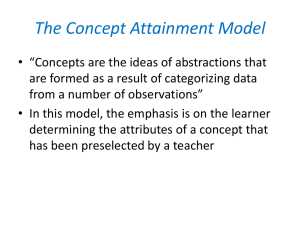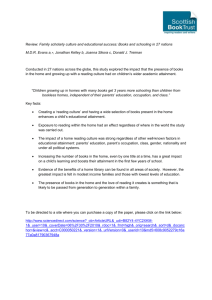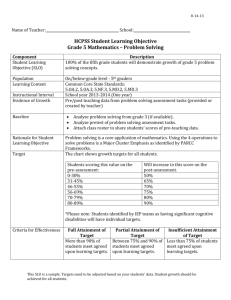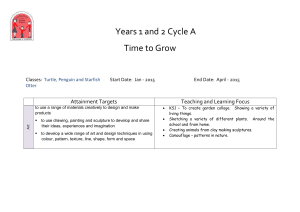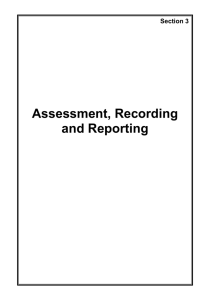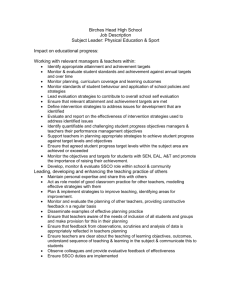Level 6 Maths Objectives - Sonning Common Primary School
advertisement
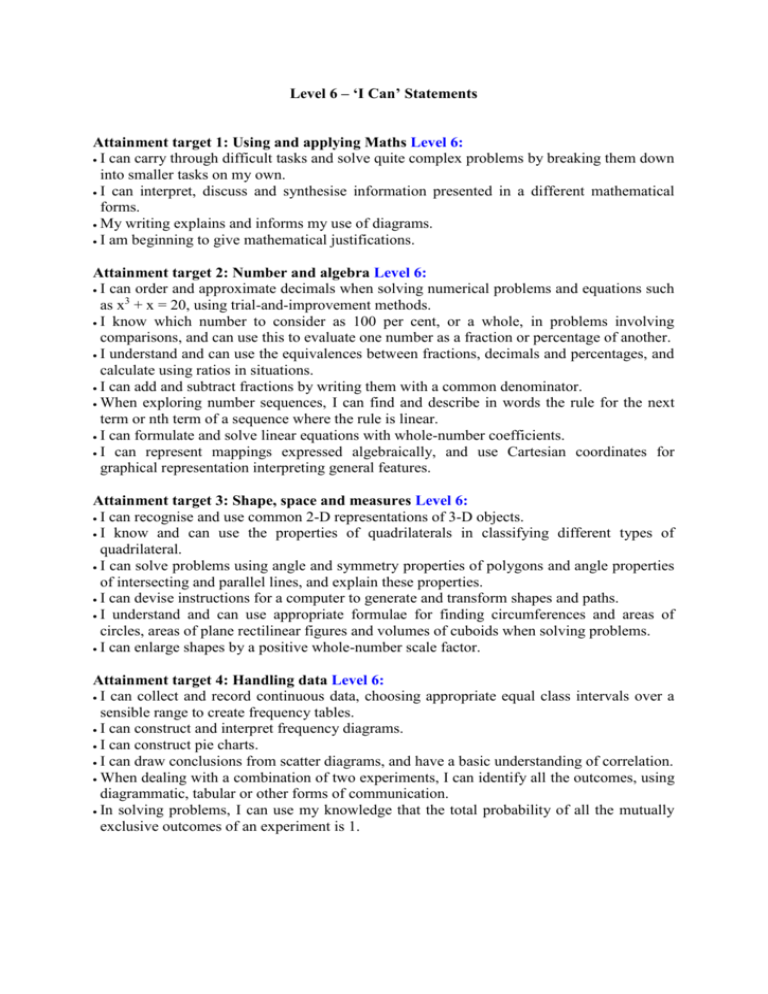
Level 6 – ‘I Can’ Statements Attainment target 1: Using and applying Maths Level 6: I can carry through difficult tasks and solve quite complex problems by breaking them down into smaller tasks on my own. I can interpret, discuss and synthesise information presented in a different mathematical forms. My writing explains and informs my use of diagrams. I am beginning to give mathematical justifications. Attainment target 2: Number and algebra Level 6: I can order and approximate decimals when solving numerical problems and equations such as x3 + x = 20, using trial-and-improvement methods. I know which number to consider as 100 per cent, or a whole, in problems involving comparisons, and can use this to evaluate one number as a fraction or percentage of another. I understand and can use the equivalences between fractions, decimals and percentages, and calculate using ratios in situations. I can add and subtract fractions by writing them with a common denominator. When exploring number sequences, I can find and describe in words the rule for the next term or nth term of a sequence where the rule is linear. I can formulate and solve linear equations with whole-number coefficients. I can represent mappings expressed algebraically, and use Cartesian coordinates for graphical representation interpreting general features. Attainment target 3: Shape, space and measures Level 6: I can recognise and use common 2-D representations of 3-D objects. I know and can use the properties of quadrilaterals in classifying different types of quadrilateral. I can solve problems using angle and symmetry properties of polygons and angle properties of intersecting and parallel lines, and explain these properties. I can devise instructions for a computer to generate and transform shapes and paths. I understand and can use appropriate formulae for finding circumferences and areas of circles, areas of plane rectilinear figures and volumes of cuboids when solving problems. I can enlarge shapes by a positive whole-number scale factor. Attainment target 4: Handling data Level 6: I can collect and record continuous data, choosing appropriate equal class intervals over a sensible range to create frequency tables. I can construct and interpret frequency diagrams. I can construct pie charts. I can draw conclusions from scatter diagrams, and have a basic understanding of correlation. When dealing with a combination of two experiments, I can identify all the outcomes, using diagrammatic, tabular or other forms of communication. In solving problems, I can use my knowledge that the total probability of all the mutually exclusive outcomes of an experiment is 1.
